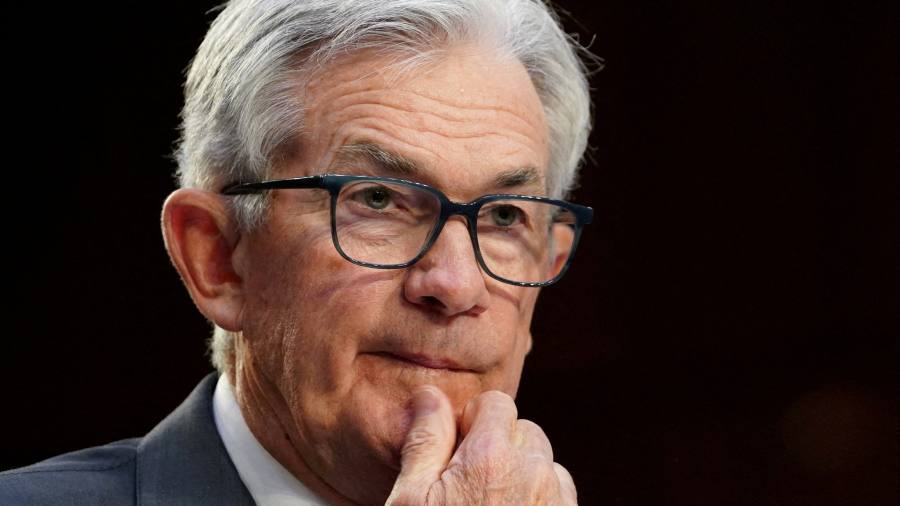US inflation was high enough in February to further complicate the path forward for the Federal Reserve as it contends with three bank failures and broader concerns about financial stability.
The consumer price index rose 6 per cent year on year last month, following a 0.4 per cent increase from the previous month, the Bureau of Labor Statistics said on Tuesday. That is a step down from the annual 6.4 per cent pace registered during January, though still stubbornly high.
Stripping out volatile food and energy prices, “core” CPI climbed another 0.5 per cent in February, up from last month’s 0.4 per cent rise and above economists’ expectations. On an annual basis, it rose 5.5 per cent, only 0.1 percentage point less than January’s year-on-year pace.
“This is an inflation update that, taken as a sole input, would suggest that a 25 [basis point] hike next week is a foregone conclusion,” said Ian Lyngen, head of US rates strategy at BMO Capital Markets. “Alas, the regional banking stress leaves next week’s decision as a wild card until there is greater clarity on the success of limiting the contagion to the rest of the banking sector”.
The data comes at a tricky moment for the Fed, which on Sunday evening was forced to step in to contain the fallout from the abrupt failure of Silicon Valley Bank on Friday. Days before, crypto-bank Silvergate had shut down.
After a frenzied weekend during which no buyer emerged to absorb the beleaguered tech lender — which at that point had been taken over by the Federal Deposit Insurance Corporation — government authorities rushed to pull together a rescue package before Asian markets opened on Monday.
Not only were deposits guaranteed in full for account holders at SVB and Signature Bank, another lender that was shut down by regulators on Sunday, but the central bank unveiled a new lending facility to ensure that “banks have the ability to meet the needs of all their depositors”.
Against this backdrop, investors and economists have rapidly altered their outlooks on the path forward for the Fed, which just last week was considering re-accelerating the pace of its interest rate increases and opting for a half-point rate rise at its meeting on March 21-22.
In the immediate aftermath of the bank failures, Wall Street was divided as to whether the Fed will proceed with another quarter-point rate rise or forgo an increase altogether. Expectations for the terminal rate — the Fed’s monetary-tightening campaign which at one point topped 5.5 per cent — have also been revised lower.
Following February’s inflation data, investors firmed bets the Fed would opt for a quarter-point rate rise. The reaction from financial markets was otherwise muted.
Ryan Sweet, of Oxford Economics, said “hot inflation” would keep pressure on the Fed to follow through with a rate rise next week. “Though stress has spiked in the banking system, the Fed is still highly focused on taming inflation,” he said.
Roughly 70 per cent of the increase in headline inflation stemmed from housing-related costs, which rose 0.8 per cent between January and last month. Compared with the same time last year, they are up 8.1 per cent.
Officials have said they are looking past this, however, because the so-called “shelter” metric tends to lag real-time data by several months. Home prices have begun to cool nationally and rents have eased, suggesting this component of the inflation report will reverse soon.
Once housing costs are stripped out, core prices rose 0.4 per cent in February.
More worryingly, services-related costs were elevated in February, including a 1.1 per cent increase in transportation-related costs for the month. Those are up 14.6 per cent year on year. Recreation prices also rose alongside those for household furnishings and airlines, while used cars extended a string of slowing price rises.
Speaking before Congress earlier this month, before the banking blow-up, chair Jay Powell said the Fed would respond more aggressively to raise rates if the data suggested a sustained rebound in economic momentum. He also warned at the time that the end point of the terminal rate would probably need to be higher than the 5.1 per cent level most officials pencilled in at the end of 2022.
The inflation report was the latest in a series of important data releases that Powell said he would be watching to determine the size of the next rate rise. Another was the February jobs report, which showed jobs growth was still well above what officials indicate is in line with easing price pressures.
In a statement on Tuesday, president Joe Biden touted the resilience of the US economy.
“As I’ve long said, and as challenges in the banking sector remind us, there will be setbacks along the way in our transition to steady and stable growth. But we face these challenges from a position of strength,” he said.
The Fed had already dialled back the scale of its tightening to a more traditional quarter-point pace in February, after multiple half-point and three-quarter-point moves last year.
In just one year, the central bank has lifted its benchmark policy rate from near zero to almost 4.75 per cent — a historically aggressive pace that some believe also contributed in part to SVB’s demise given its holdings of long-term fixed-rate bonds and lack of protection against rising rates.
Additional reporting by Kate Duguid in New York


